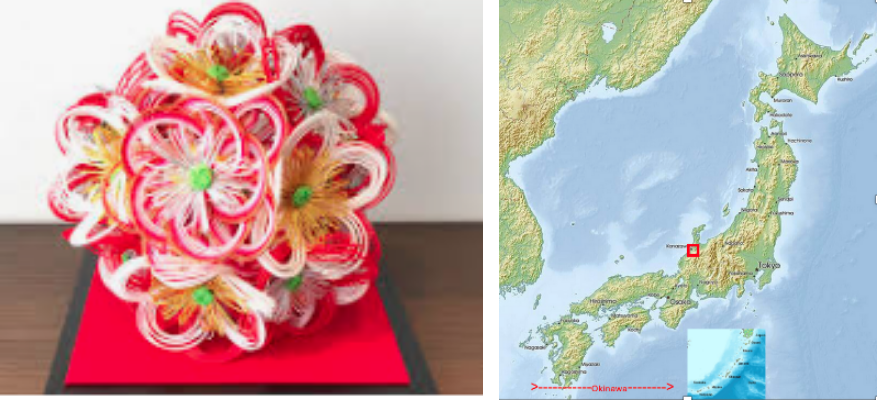⚫︎ 加賀水引細工 / Kaga Mizuhiki

明治時代まで結納や金封にかけられる水引結びや折型は、ほとんど平面的なものだった。 1915年(大正4年)頃、石川県金沢市の津田左右吉(加賀水引初代)が、立体的な和紙の包み方(折型)と、鶴亀や松竹梅などの立体的な水引の結び方(水引細工)を考案し、結納や金封に飾るようになった。
Until the Meiji era, most of the mizuhiki knots and folded knots that were hung on knots and gold seals were flat. Around 1915 (Taisho 4), Tsuda Sokichi (the first generation of Kaga Mizuhiki) of Kanazawa City, Ishikawa Prefecture, devised a three-dimensional method of wrapping Japanese paper (orikata) and a three-dimensional method of tying mizuhiki such as Tsuru turtle and Shochiku plum (mizuhiki work), and began to decorate it with knots and gold seals.




